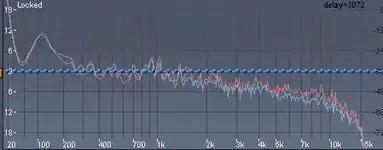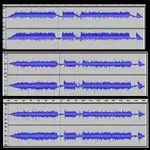bennychico11
...
this is cool to play around with to see what effects it.
more pictures to reaffirm what everyone's already been saying (plus, because I'm bored and I found the before and after pics to look cool )
)
Just a 20Hz cut, 6dB/oct cut and it effects it dramatically in the lows...and effectively fixing the offset.
more pictures to reaffirm what everyone's already been saying (plus, because I'm bored and I found the before and after pics to look cool
 )
)Just a 20Hz cut, 6dB/oct cut and it effects it dramatically in the lows...and effectively fixing the offset.
Attachments
Last edited:



 I'd guess that at zoomed-out resolution, the program makes assumptions about negative peaks from positive values, essentially generating a symmetrical waveform.
I'd guess that at zoomed-out resolution, the program makes assumptions about negative peaks from positive values, essentially generating a symmetrical waveform.


 ).
). 
